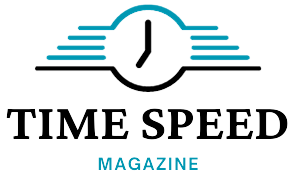Foot scanners have completely changed how we see and treat foot-related problems. These gadgets are essential for offering individualized solutions for people in a variety of fields, including sports, fitness, and healthcare. This article delves into the realm of foot scanners, examining its features, advantages, uses, and potential developments.
Overview of Foot Scanning Devices
Devices called foot scanners are made to examine the anatomy and physiology of the foot. They take precise measurements and photos using cutting-edge equipment, giving important information about the biomechanics of the foot. These scanners are becoming more and more common in several industries, such as sports, healthcare, and footwear.
How Foot Scanners Operate
An Understanding of the Technology
Foot scanners generate comprehensive foot profiles by employing a range of technologies, including pressure sensors, cameras, and lasers. These profiles contain details like gait analysis, pressure spots, and arch height.
Foot Scanner Types
Foot scanners come in a variety of forms, from straightforward handheld gadgets to complex 3D scanning systems. Each kind meets particular user needs with its own set of features and advantages.
Advantages of Foot Scanner Use
Foot scanners are very useful equipment in many different fields because of their many benefits.
Particularized Orthotics
Customized orthotic devices can be made thanks to foot scanners, which precisely evaluate the biomechanics and anatomy of the foot. By offering the best possible support and alignment, these orthotics lower the chance of foot-related issues.
Injury Avoidance
Foot scanners are useful in detecting potential problems that could result in injury, such as overpronation or supination. People can reduce their risk of injury and enhance their general foot health by taking care of these problems early on.
Enhanced Sport Performance
The technology that uses foot scanning can be quite helpful to athletes. Scanners can pinpoint areas for improvement in foot mechanics and gait patterns, which can increase performance and lower the risk of injury.
The Uses of Foot Scanners
Medical Care
Foot scanners are used in healthcare to diagnose and treat ailments like arthritis, diabetic foot ulcers, and plantar fasciitis. Additionally, they support the creation of specially made shoes for patients with certain requirements.
Exercise and Health
Foot scanners are used by athletes and fitness enthusiasts to maximize performance and minimize injuries. These gadgets offer useful information for enhancing method, picking suitable footwear, and lessening foot pain.
Customizing Footwear
Foot scanners enable the creation of custom-fitted footwear tailored to the individual’s unique foot shape and biomechanics. Whether for medical purposes or enhancing athletic performance, custom shoes offer superior comfort, support, and performance compared to off-the-shelf options.
Applications of Foot Scanners
The versatility of foot scanning technology has led to its widespread adoption in various fields
Healthcare
In podiatry and orthopedics, foot scanners play a crucial role in diagnosing and treating foot-related conditions such as plantar fasciitis, bunions, and diabetic foot ulcers. By providing precise measurements and analysis, these devices help healthcare professionals develop effective treatment plans and monitor patient progress.
Sports Performance
Athletes and coaches utilize foot scanners to optimize footwear selection and design for maximum performance and injury prevention. By analyzing factors such as pressure distribution and foot motion, these devices can recommend the most suitable shoes for specific sports and activities, improving comfort, stability, and efficiency of movement.
Advantages of Using Foot Scanner
The advantages of using foot scanners are many. For starters, they allow for the creation of custom orthotics that are specific to the individual’s foot anatomy. These orthotics offer support and alignment, lowering strain and discomfort.
Furthermore
Regular foot scans can help identify potential problems before they become serious, allowing for proactive foot care measures. Foot scanners provide athletes with insights into biomechanics, allowing them to optimize performance while reducing the risk of injury.
Different types of foot scanners
Foot scanners are generally classified into two types: 3D foot scanners and pressure plate foot scanners. 3D scanners generate detailed three-dimensional models of the feet, allowing for accurate measurements and analysis. Pressure plate scanners, on the other hand, use pressure on the foot surface to assess weight distribution and gait dynamics.
Applications of Foot Scanners
Foot scanners are used in a variety of settings, such as podiatry clinics, athletic footwear stores, and medical research facilities. Podiatrists use foot scanners to diagnose and treat foot conditions, whereas shoe stores use them to recommend appropriate footwear based on individual foot profiles. Foot scanners help researchers study biomechanics and develop novel interventions.
Choosing the Right Foot Scanner.
When choosing a foot scanner, several factors must be taken into consideration. Accuracy and precision are critical for ensuring reliable results. Furthermore, compatibility with existing systems and software is critical for smooth integration into workflows. Cost-effectiveness is an important consideration, especially for small practices and clinics.
Case Studies
Many case studies demonstrate the effectiveness of foot scanners in improving foot health and overall well-being. The advantages are numerous, ranging from chronic pain relief to improved athletic performance. Real-world examples demonstrate the transformative power of personalised orthotics and targeted interventions based on foot scan data.
Future Developments in Foot Scanning Technology
The future of foot scanning technology looks bright, with ongoing advancements aimed at improving accuracy and efficiency. AI-powered analysis and portable scanning devices are set to transform the field, making foot health more accessible and personalized.
Challenges and limitations
Despite their advantages, foot scanners face challenges such as accessibility and cost. Not everyone has access to these technologies, limiting their widespread use. Furthermore, ethical considerations concerning data privacy and informed consent must be addressed to ensure responsible use. Visit our Website Time Speed Magazine.
FAQs
Can one use foot scanners safely?
Indeed, there is no risk to users when using foot scanners.
How much time does it take to scan afoot?
The complexity of the analysis and the type of scanner being used can affect how long a foot scanning procedure takes. It usually takes a few minutes to finish.
Are kids able to utilize foot scanners?
Yes, youngsters can utilize foot scanners to evaluate their foot development and spot any problems early on.
Does using a foot scanner require specific training?
Many versions of sophisticated scanners are made to be user-friendly and require little training, but some may require specialist instruction.
Are there any other uses for foot scanners besides medicine?
No, there are uses for foot scanners in sports, fitness, and the shoe industry in addition to the medical sector.


